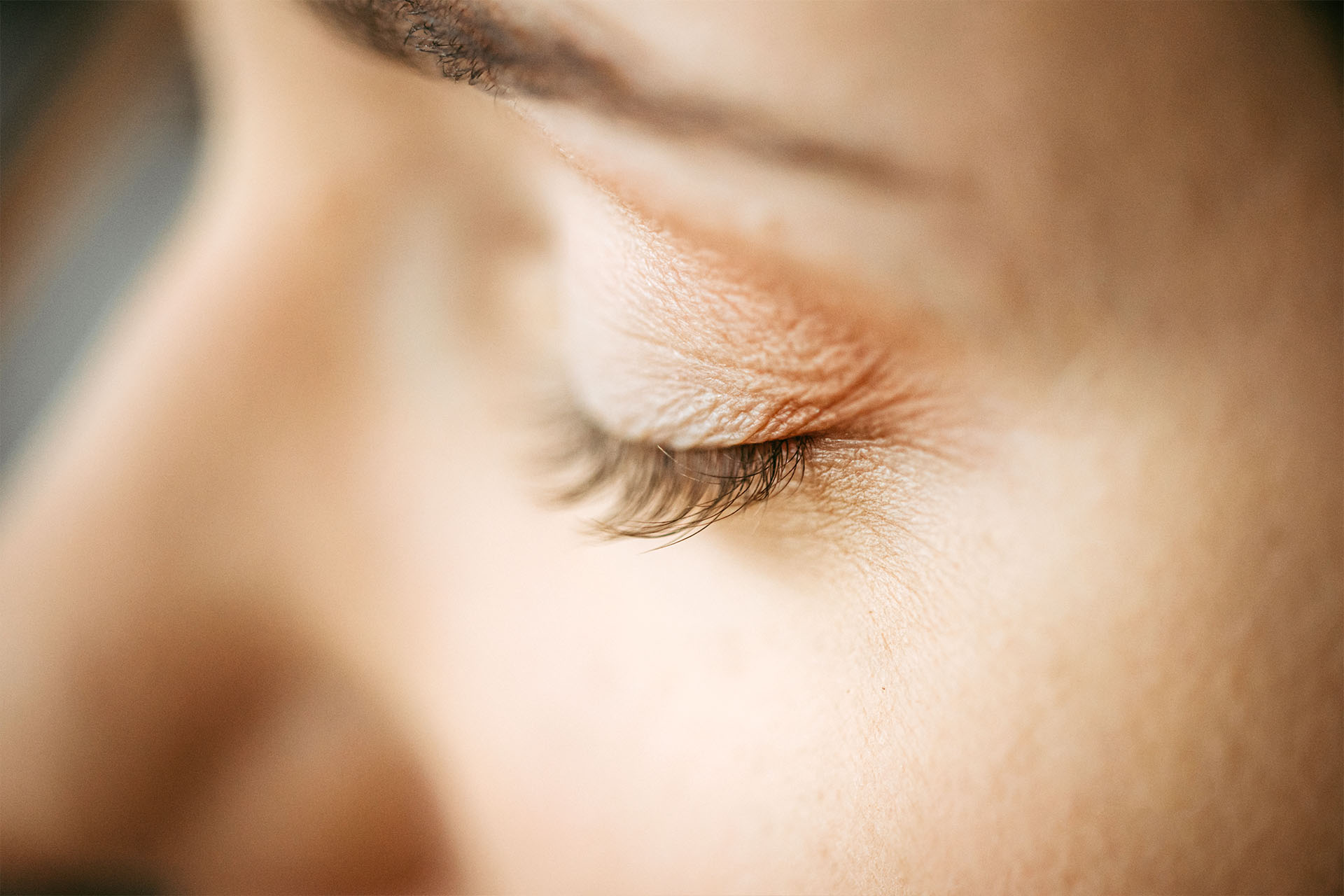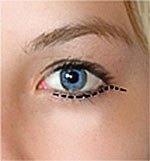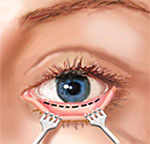Before surgery
The goal of your plastic surgeon and the entire staff is to make your surgical experience as easy and comfortable for you as possible. If you are a smoker, it is highly recommended to stop smoking well in advance of surgery. Smoking can impair your ability to heal. Aspirin and certain anti-inflammatory drugs can cause increased bleeding, so you should avoid taking these medications for a period of time before surgery. Your surgeon will provide you with additional preoperative instructions. Aesthetic eyelid surgery is usually performed on an outpatient basis. If this is the case, be sure to arrange for someone to drive you home after surgery and to stay with you for the next 24 hours.
The Day of Eyelid Surgery
Your eyelid surgery is usually performed at one of our JCI-accredited hospitals. Medications are administered for your comfort during the surgical procedure. Frequently, local anesthesia and intravenous sedation are used for patients undergoing eyelid surgery, as general anesthesia is rarely needed. For your safety during the operation, various monitors are used to check your heart, blood pressure, pulse and the amount of oxygen circulating in your blood. When surgery is completed, you will be taken into a recovery area where you will continue to be closely monitored. Your vision will be blurry as a result of ointment used to soothe and protect the eye during surgery as well as from the swelling that is a normal aftermath of eyelid procedures. There should be surprisingly little discomfort, however, from the surgery. You probably will be permitted to go home after a short period of observation, although in some occasions patients may stay overnight in the hospital.
Eyelid Surgery Recovery
After surgery, the surgeon will probably lubricate your eyes with ointment and may apply a bandage. Your eyelids may feel tight and sore as the anesthesia wears off, but you can control any discomfort with the pain medication prescribed by your surgeon. If you feel any severe pain, call your surgeon immediately. Your surgeon will instruct you to keep your head elevated for several days, and to use cold compresses to reduce swelling and bruising. (Bruising varies from person to person: it reaches its peak during the first week, and generally lasts anywhere from two weeks to a month.) You’ll be shown how to clean your eyes, which may be gummy for a week or so. Many doctors recommend eyedrops, since your eyelids may feel dry at first and your eyes may burn or itch. For the first few weeks you may also experience excessive tearing, sensitivity to light, and temporary changes in your eyesight, such as blurring or double vision. Your surgeon will follow your progress very closely for the first week or two. The stitches will be removed two days to a week after surgery. Once they’re out, the swelling and discoloration around your eyes will gradually subside, and you’ll start to look and feel much better.
You should be able to read or watch television after two or three days. However, you won’t be able to wear contact lenses for about two weeks, and even then they may feel uncomfortable for a while.
Most people feel ready to go out in public (and back to work) in a week to 10 days. By then, depending on your rate of healing and your doctor’s instructions, you’ll probably be able to wear makeup to hide the bruising that remains. You may be sensitive to sunlight, wind, and other irritants for several weeks, so you should wear sunglasses and a special sunblock made for eyelids when you go out. Your surgeon will probably tell you to keep your activities to a minimum for three to five days, and to avoid more strenuous activities for about three weeks. It’s especially important to avoid activities that raise your blood pressure, including bending, lifting, and rigorous sports. You may also be told to avoid alcohol, since it causes fluid retention.
Results of Your Eyelid Surgery
Healing is a gradual process, and your scars may remain slightly pink for six months or more after surgery. Eventually, though, they’ll fade to a thin, nearly invisible white line. On the other hand, the positive results of your eyelid surgery-the more alert and youthful look-will last for years. For many people, these results are permanent. Aesthetic eyelid surgery has the effect of making you look more rested, refreshed and alert. Since the healing process is gradual, you should expect to wait at least several weeks to get an accurate picture of the results of your eyelid surgery. Incisions will fade over a number of months usually becoming barely visible. The results of aesthetic eyelid surgery are usually long-lasting, but they may be affected by heredity and lifestyle factors. Removal of fat from your eyelids, which is usually the cause of puffiness and bags, is permanent, and these conditions generally will not recur. The skin continues to age, however, and skin laxity along with the fine wrinkling of the eyelid area may, at some point, return. Sometimes loss of tone in the forehead causes additional sagging of the eyebrows which mimics a recurrence of drooping upper eyelids. If this happens, correction may require a forehead lift or a secondary eyelid procedure. Even though the aging process continues, patients are usually happy with their appearance for many years following eyelid surgery. Some patients find that they want to make additional improvements at a later time.
Understanding Risks
Fortunately, significant complications from aesthetic eyelid surgery are rare. The subject of risks and potential complications of surgery is discussed on a personal basis between you and your surgeon. Some of the potential complications that may be discussed with you include hematoma (an accumulation of blood under the skin that may require removal), infection, changes in sensation, scarring, allergic reactions, damage to underlying structures, need for revisions, unsatisfactory results possibly necessitating additional procedures and medical risks. Following the surgery, there can be a feeling of dryness or irritation in the eye that requires treatment. There is a possibility of impaired eyelid function that sometimes may need to be corrected by additional surgery. You can help minimize certain risks by following the advice and instructions of your plastic surgeon, both before and after your eyelid surgery. When eyelid surgery is performed by a qualified plastic surgeon, complications are infrequent and usually minor. Nevertheless, there is always a possibility of complications, including infection or a reaction to the anesthesia. The minor complications that occasionally follow blepharoplasty include double or blurred vision for a few days; temporary swelling at the corner of the eyelids; and a slight asymmetry in healing or scarring. Tiny whiteheads may appear after your stitches are taken out; your surgeon can remove them easily with a very fine needle. Following surgery, some patients may have difficulty closing their eyes when they sleep; in very rare cases this condition may be permanent. Another very rare complication is ectropion, a pulling down of the lower lids. In this case, further surgery may be required.
A few medical conditions make blepharoplasty more risky. They include thyroid problems such as hypothyroidism and Graves’ disease, dry eye or lack of sufficient tears, high blood pressure or other circulatory disorders, cardiovascular disease, and diabetes. A detached retina or glaucoma is also reason for caution; check with your ophthalmologist before you have surgery.
BLEPHAROPLASTY COMBINED WITH OTHER PROCEDURES
Eyelid lift or blepharoplasty surgery is frequently combined with other facial rejuvenative procedures. Blepharoplasty is often performed along with fat transfer (autologous fat grafts), laser resurfacing procedures, or chemical peels. For those individuals who desire additional plastic surgery enhancements, particularly geared toward achieving and maintaining a youthful balance of all parts of the face, your blepharoplasty may also be combined with a facelift. Eyelid lift or blepharoplasty can also be combined with breast and body contouring procedures such as liposuction, tummy tuck, breast augmentation, and breast liposuction, tummy tuck, breast augmentation, and breast lift.






